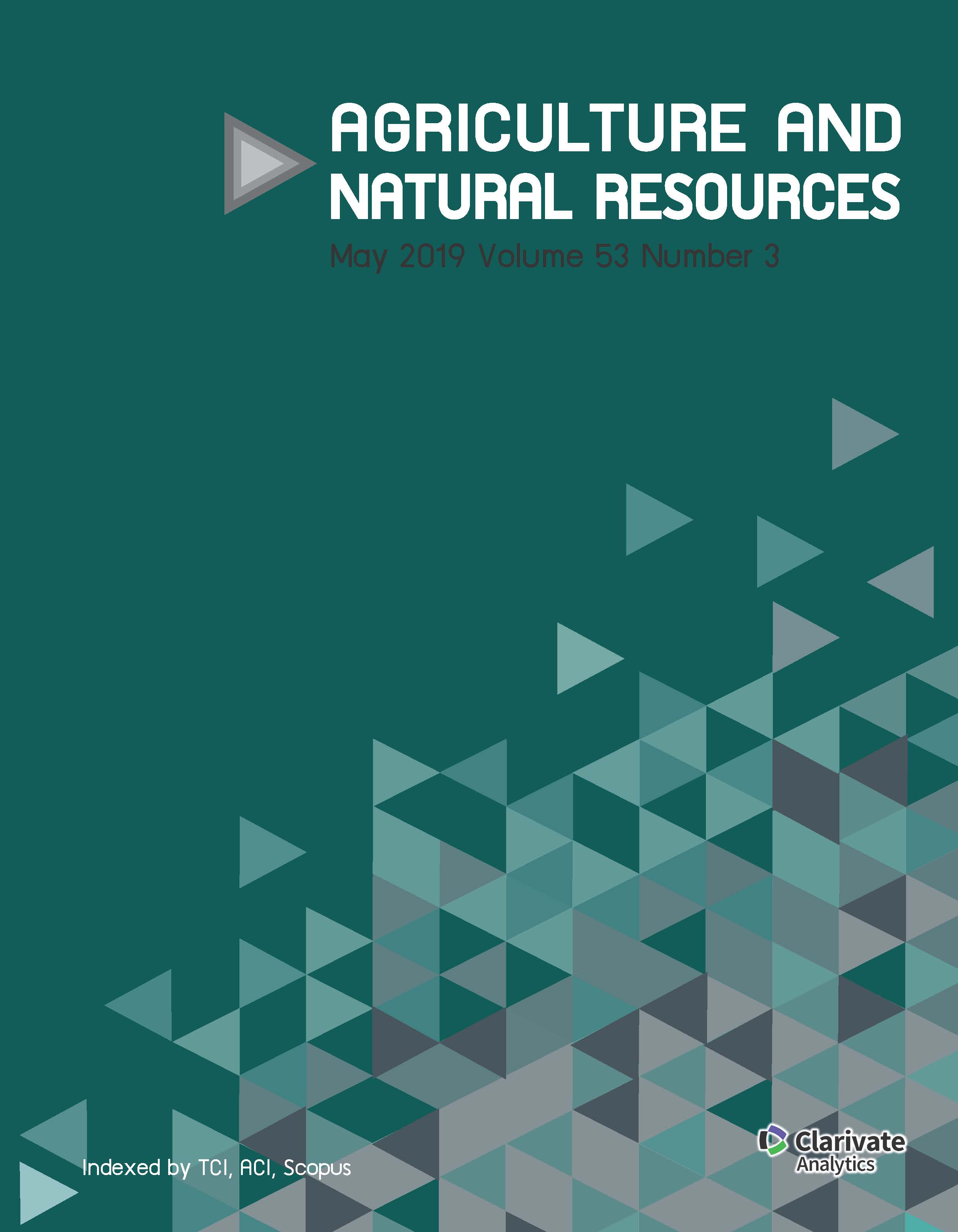Relationship between Carbon Content and Growth of Teak in Natural Forest and Plantation, Lampang Province, Thailand
คำสำคัญ:
Carbon Content, Dendrochronology, Lampang, Teak, Tree Growthบทคัดย่อ
The relationship was studied between the carbon content (percentage dry weight of carbon in tree stems) and growth of teak in natural forest and plantation at Mae Ngao National Reserve Forest and at Huai Thak in a 63 year-old plantation in Lampang province, Thailand, respectively. Teak growth patterns were studied using dendrochronological techniques that were then classified into three growth-rate periods (small, medium, large). The carbon contents of teak in each growth-rate period within the natural forest and the plantation were compared using one-way analysis of variance, while differences between the natural forest and plantation within each growth-rate period were compared using an independent two-sample t test. The results indicated that the differences in the carbon contents between growth-rate periods of teak in natural forest were not significant (p = 0.053), with the carbon contents based on dry weight in the small, medium and large growth-rate periods in the natural forest being 49.16%, 49.49% and 49.75%, respectively. Similarly, the differences in the carbon contents among the growth-rate periods of teak in the plantation were not significant (p = 0.583), with the carbon contents based on dry weight in the small, medium and large growth-rate periods of teak in the plantation being 48.83%, 49.19% and 49.29%, respectively. The differences in the carbon contents of teak growing in natural forest and plantation were not significant (p = 0.201). The average carbon contents on a dry weight basis in natural forest and plantation were 49.47% and 49.10%, respectively.
ดาวน์โหลด
เผยแพร่แล้ว
รูปแบบการอ้างอิง
ฉบับ
ประเภทบทความ
สัญญาอนุญาต

อนุญาตภายใต้เงื่อนไข Creative Commons Attribution-NonCommercial-NoDerivatives 4.0 International License.
online 2452-316X print 2468-1458/Copyright © 2022. This is an open access article under the CC BY-NC-ND license (http://creativecommons.org/licenses/by-nc-nd/4.0/),
production and hosting by Kasetsart University of Research and Development Institute on behalf of Kasetsart University.







